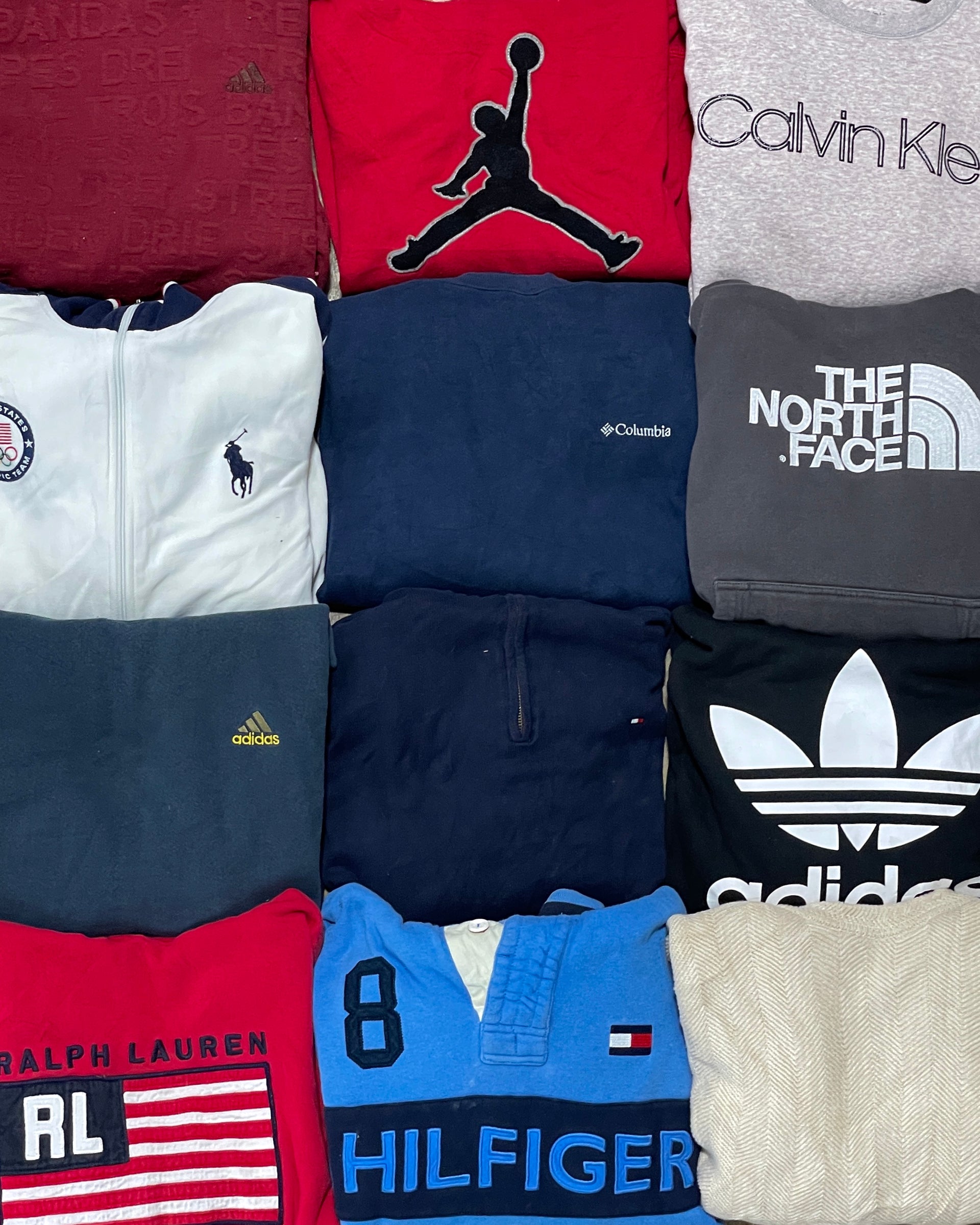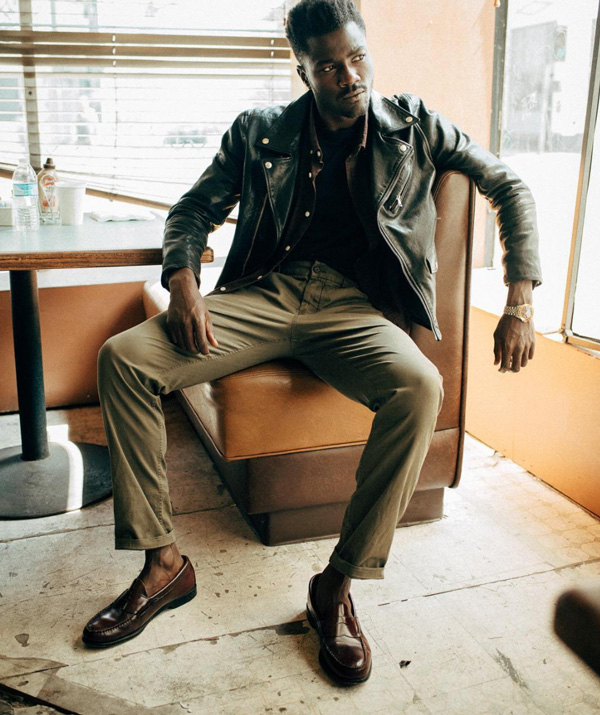Branded Clothing That Lasts: Choosing Fabrics for Longevity
Branded Clothing That Lasts: Choosing Fabrics for Longevity
Blog Article
Comprehending Clothes: The Importance of Material Choices in Your Closet
The choice of textile in clothes plays a pivotal duty in both aesthetic appeals and capability. Different products supply differing degrees of breathability, comfort, and longevity, directly affecting the user's experience. Recognizing these nuances can enhance one's closet significantly. Several ignore just how these choices can influence not simply personal style, yet also sustainability. What fabric choices could redefine your closet and straighten it with both style and obligation?
The Role of Textile in Style and Capability

Typical Fabric Kinds and Their Attributes
When picking clothes, understanding the attributes of typical textile types is essential for making informed selections. Cotton, a widely-used all-natural fiber, is known for its soft qualities, versatility, and breathability, making it appropriate for informal wear and day-to-day garments. Bed linen, an additional all-natural alternative, flaunts excellent moisture-wicking residential or commercial properties and a distinctive texture, ideal for cozy climates.Wool, typically preferred for its warmth and longevity, varies in excellence; merino woollen is soft versus the skin, while coarser kinds are utilized for outerwear. Artificial materials like polyester and nylon use sturdiness and resistance to creases, making them preferred for activewear and traveling garments. Ultimately, blends, which incorporate all-natural and synthetic fibers, can enhance performance while preserving convenience. By acknowledging these fabric qualities, individuals can pick apparel that lines up with their way of living and aesthetic preferences.
Breathability and Convenience: Picking the Right Fabrics for Different Climates
Picking the right materials for various environments can substantially boost comfort and general wearability. Breathable products are essential in hot climates, as they permit air circulation and moisture evaporation. Fabrics such as cotton, bed linen, and moisture-wicking synthetics successfully draw sweat away from the body, keeping the user cool and dry. Alternatively, in chillier environments, thicker materials like woollen or fleece supply insulation while keeping breathability, making certain warmth without overheating.Additionally, the selection of fabric weight plays a crucial duty; lightweight textiles are more effective for summer, whereas heavier alternatives are fit for winter season wear. Understanding the distinct homes of each material makes it possible for individuals to dress properly for varying climate condition. Inevitably, picking breathable and comfortable fabrics tailored to details climates can considerably improve daily convenience and boost the overall experience of wearing apparel.
Longevity and Care: Exactly How Textile Affects Long Life of Your Closet
Choosing the best products can considerably affect the sturdiness and treatment demands of a closet. Fabrics such as cotton and polyester are recognized for their strength and convenience of upkeep, making them ideal for daily wear. On the other hand, fragile products like silk and shoelace need more careful handling and specialized cleaning approaches, which can increase the time and effort needed for care. Branded Clothing.Durability is likewise affected by the material's weave and surface; securely woven materials tend to resist wear and tear better than loosely woven choices. In addition, artificial blends frequently offer boosted longevity, integrating the ideal qualities of multiple fibers.Understanding the treatment instructions for each textile is essential, as inappropriate drying out or cleaning can bring about early wear. Eventually, choosing resilient products can cause a longer-lasting wardrobe, reducing the frequency of replacements and contributing to a much more sustainable style selection
The Effect of Textile on Fit and Shape

Lasting Fabric Options: Making Eco-Friendly Choices
The effect of material expands past fit and silhouette to incorporate ecological aspects, prompting an expanding rate of interest in sustainable material options. Eco-friendly textiles, such as natural cotton, hemp, and Tencel, are obtaining traction among consumers who prioritize sustainability in their wardrobes. These products are often generated with less chemicals and water, minimizing their eco-friendly footprint.Additionally, recycled materials, made from post-consumer waste, provide an ingenious solution to the fabric market's pollution trouble. Brands progressively accept transparency in their sourcing methods, allowing customers to make informed choices regarding their purchases.Choosing lasting textiles not just supports moral methods however additionally urges the fashion business to adopt more liable manufacturing methods. As recognition of ecological concerns climbs, individuals are advised to assess the long-lasting influence of their fabric selections, fostering a motion in the direction of a much more lasting and ecologically mindful approach to style.
Elevating Design: Exactly How Material Can Transform an Attire
While several may concentrate on color and cut when picking an attire, the option of fabric plays an important role in raising design and enhancing overall appearance. Different products communicate distinctive moods and messages; as an example, silk emanates high-end and sophistication, while jeans supplies a casual, unwinded ambiance. The structure and drape of a material can considerably change the shape, with click to find out more organized fabrics supplying a refined appearance and softer ones producing a much more fluid, kicked back aesthetic.Moreover, the weight of the fabric influences wearability across seasons. Lightweight materials like bed linen and cotton are ideal additional hints for summer season, while heavier materials such as wool and velour give heat and beauty in colder months. Comprehending fabric residential properties, such as breathability and stretch, likewise equips individuals to make educated choices that improve convenience without compromising design. Inevitably, the appropriate textile can change a clothing from ordinary to extraordinary, making it a vital consideration in any kind of closet.
Often Asked Concerns
Just how Do I Determine the Material Content of My Clothes?
To recognize fabric content, one can analyze care labels, conduct burn tests for fiber identification, or consult textile examples. These techniques assist separate products, guaranteeing informed selections for clothing treatment and maintenance in daily wear.
Can Fabric Choice Affect My Mood or Self-confidence?
Material option can considerably affect an individual's state of mind and confidence. Branded Clothing. Particular materials may stimulate sensations of comfort or elegance, while others can really feel uncomplimentary or restrictive, ultimately affecting self-perception and psychological wellness throughout the day
What Fabrics Are Finest for Delicate Skin?
For people with delicate skin, natural fabrics like bamboo, bed linen, and cotton are commonly suggested. These products are breathable, hypoallergenic, and less most likely to create irritability, making them suitable selections for convenience and skin health.
Just how Do I Correctly Laundry and Look After Different Fabrics?
To effectively wash and care for various fabrics, one need to think about each product's specific needs, consisting of temperature level setups, cleaning agents, and drying out techniques, making sure durability and keeping the material's initial high qualities for perfect use.
Exist Specific Fabrics for Athletic or Performance Put On?
Athletic or efficiency wear typically utilizes materials such as nylon, spandex, and polyester. These materials are developed for moisture-wicking, breathability, and versatility, enhancing activity and convenience throughout physical activities while providing resilience and support. important site Conversely, in chillier climates, thicker textiles like wool or fleece give insulation while keeping breathability, making certain heat without overheating.Additionally, the selection of textile weight plays an important duty; lightweight fabrics are more effective for summertime, whereas much heavier choices are fit for winter months wear. In contrast, fragile materials like silk and lace require more careful handling and specialized cleansing approaches, which can enhance the time and initiative needed for care.Durability is likewise influenced by the textile's weave and coating; securely woven materials have a tendency to stand up to wear and tear far better than loosely woven choices. In comparison, inflexible materials can limit motion yet give a timeless, sleek look.Moreover, the thickness and appearance of the material can affect the visual assumption of body form. The effect of fabric expands past fit and silhouette to encompass ecological aspects, triggering a growing rate of interest in lasting fabric choices. The structure and drape of a textile can considerably change the shape, with structured fabrics providing a refined look and softer ones developing a much more fluid, kicked back aesthetic.Moreover, the weight of the fabric influences wearability throughout seasons.
Report this page